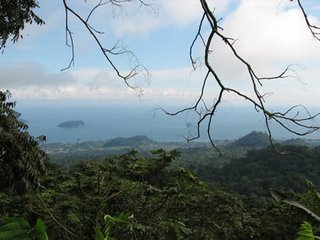
Picture by J.P. Lockwood of USAID
Our hotel offers simple yet comfortable rooms with bath en suite and remarkable views of distant islands. The beach sand is curiously clean yet black, of washed volcanoes. The water, too, is crystal clear, only waist deep a hundred yards from shore. A freshwater spring feeds water flowing rapidly through a narrow lagoon just inshore; a leisurely swimmer can stay in one spot.
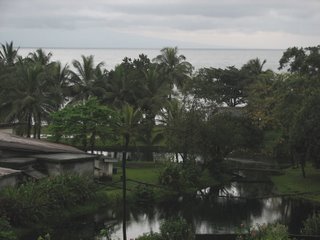
Above on the slopes of Mount Cameroon sits the town of Buea, and nearby, nestled among curiously lower altitude tea estates, is the quaint village of Bonjongo. A steep and winding road leads up a volcanic chimney atop which is perched a lovely old church with a commanding view. On a sultry Sunday afternoon, the church is deserted but unlocked. A passing tourist offers a gift of 1000 francs ($2) in the box at the entrance.
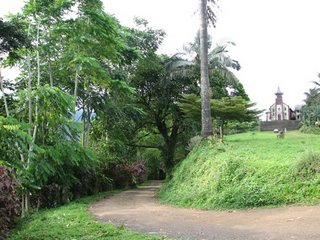
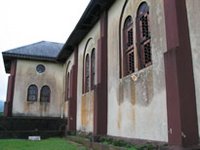 | 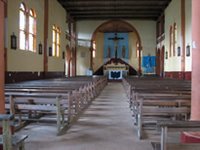 | 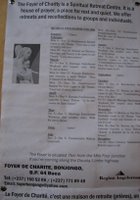 |
|---|
Down below by the sea, Limbé hosts a well known botanical garden, the signage a bit faded, though the grass and walks are well maintained. Within the grounds is a small restaurant on a bluff overlooking the sea. Small, sheltered terraces offer comfortable tables with a view in the hazy distance of the volcanic Equatorial Guinea.
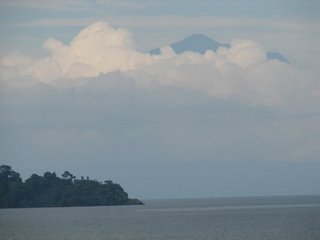
The young waitress in a pressed black skirt and white blouse is most pleasant indeed, with a quick smile and a bashful demeanor. She quickly proffers a basket of French bread, soft and chewy after a day in the humid tropics, sliced thickly, and served with softened butter. As fluent in French as in English, which is quite common in this the anglophone part of a country dominated by French speakers, she helps us translate the menu offerings of bar and merou into the more familiar sea bass and grouper.
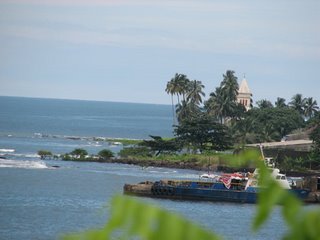
Mutzig lagers are proposed, served very cold in 24-ounce bottles. The bottles are handy for anchoring the table cloth which threatens regularly with the regular gusts of cooling sea breezes to carry away our bread basket. Other customers trickle in, most likely wealthier local residents, perhaps employed by the nearby oil refinery or at the tea estate.

We begin with salads of shredded carrots, cabbage, tomatoes, and red onions accompanied by a small tureen of tangy, homemade mayonnaise. My companion chooses the garlic baby shrimp and linguini, sauteed quickly in butter and lightly seasoned with cayenne and local herbs. I opt for the grilled filet of barracuda, tender and flaky, cooked just long enough, and served with roasted potatoes, slightly charred with a pleasing hint of charcoal smoke. Beers, salads, and main courses for about 8000 Central African francs per person ($16).
